Segedunum and Sunday Lunch
On Sunday, we had good intentions of going to the Tynemouth Castle and Priory, since it is literally five minutes down the street from my sister and sister-in-law's flat. We got the family up and dressed and ready (a feat unto itself) and trundled down the street ... and the castle was closed! The weather had been so poor with the wind and the rain that they had "health and safety issues" and had to close. But they promised to be open the next day.
Bobby and I were left with a few hours to spend, so we decided to head to one of the next towns over to Wallsend to see Segedunum, an excavated Roman fort built at the east-most end of Hadrian's Wall. Hadrian's Wall extends across the north of England and was built by the Emperor Hadrian to protect the Romans from the "Barbarians" to the north. Besides the excavated fort, there is a museum on site and a reconstructed Roman bath.
Bobby and I wandered around the museum first because the baths were only opened every hour on the hour. When the hour came around, we headed over to the baths, which were a mirror reconstruction of a bath found nearby. Next, we headed out to the garden, then wandered around the ruins. Many of the original stones remained, and it was amazing to stand on structures that were almost two thousand years old.
That afternoon, we went over Kirsty's parents' house for Sunday roast lunch, a tradition we don't have in the United States: The closest comparison I can draw is that it is a Thanksgiving feast every week, with a meat course, multiple vegetables, and potatoes. It was excellent. It was a tradition I could gladly adopt! It has also been wonderful to meet my "UK family" at long last; they are wonderful people, and we've gotten on great with them.
That evening we spent at home and ordered pizza and Chinese take-away for a late-night supper.
Yes, there are pictures ...
Here is the museum with the ruins in the foreground:
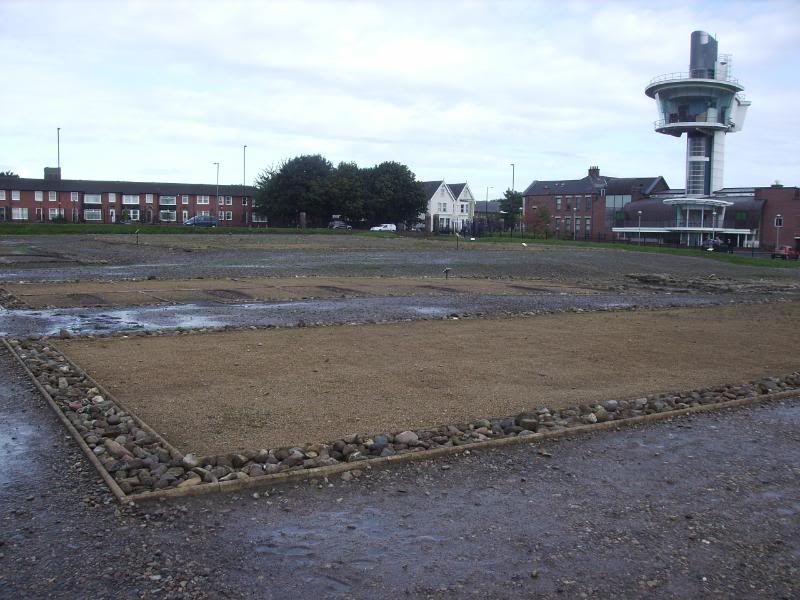
The Baths
Here is Bobby in front of the baths ...
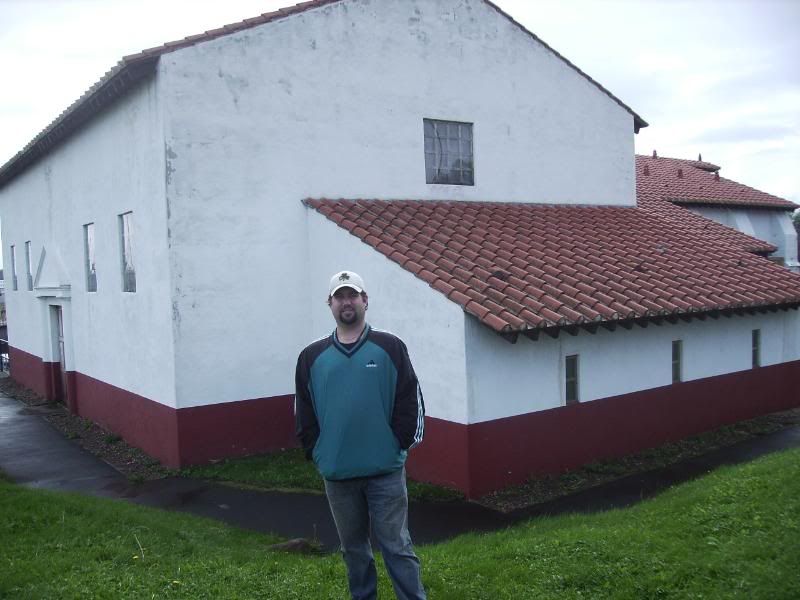
The first room is the changing room, where the patrons used to sit and talk and play board games while waiting to enter the baths. The sessions were men-only and women-only, so nothing too exciting!
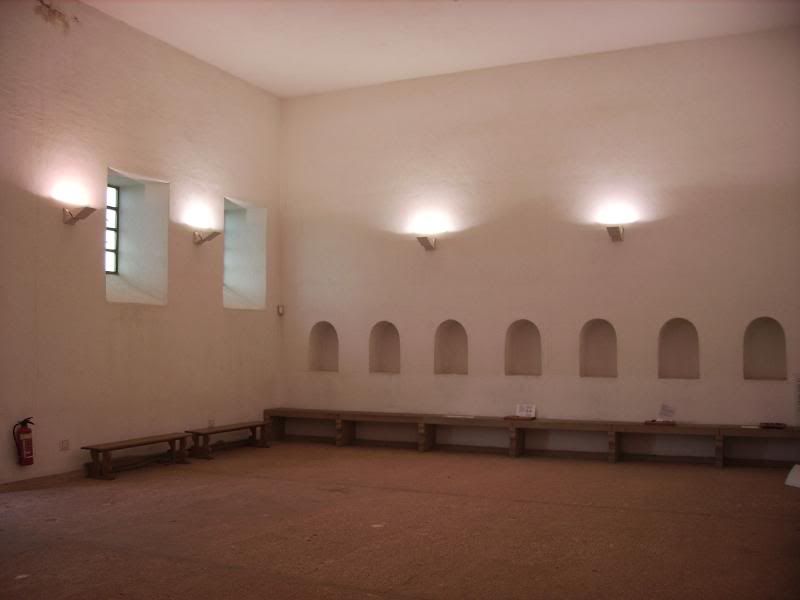
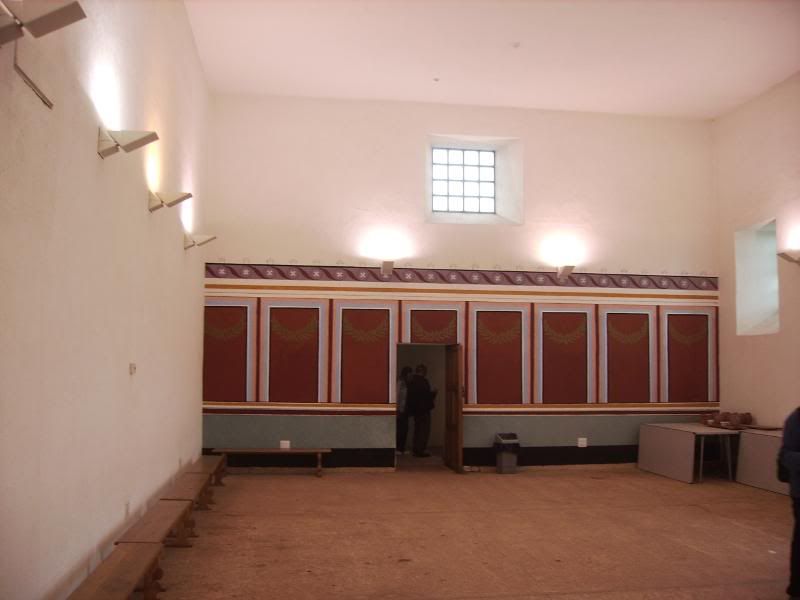
The cold room was where the patrons washed off the dirt before moving into the warm and hot rooms. The frescos were done in the style of some that they had been found. The water tank is beyond the glass ...
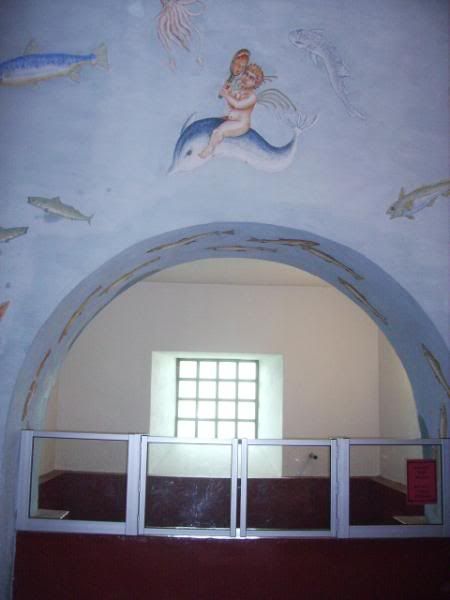
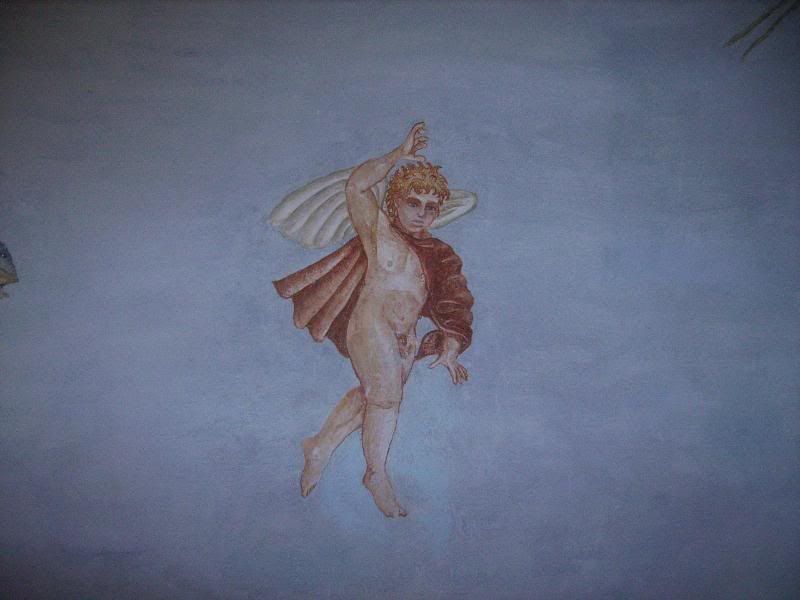
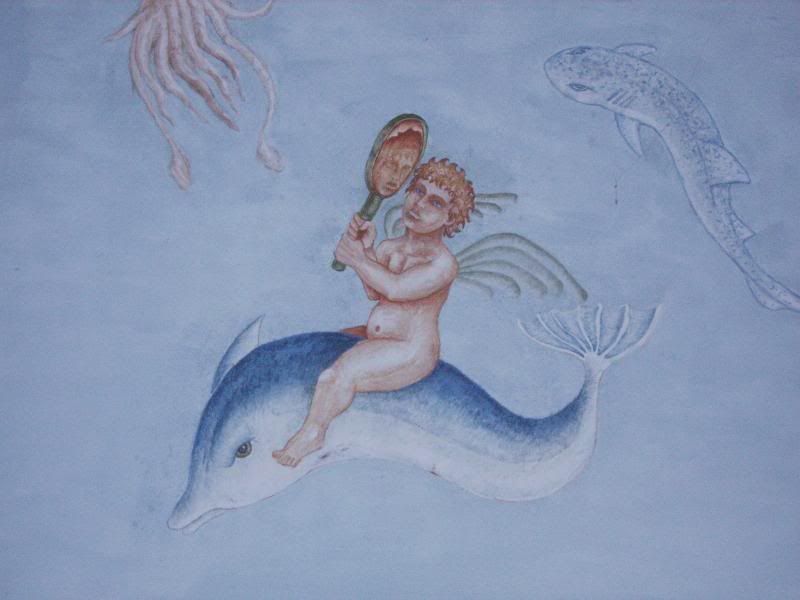
A replica of a statue of Fortuna that sat in the room ...
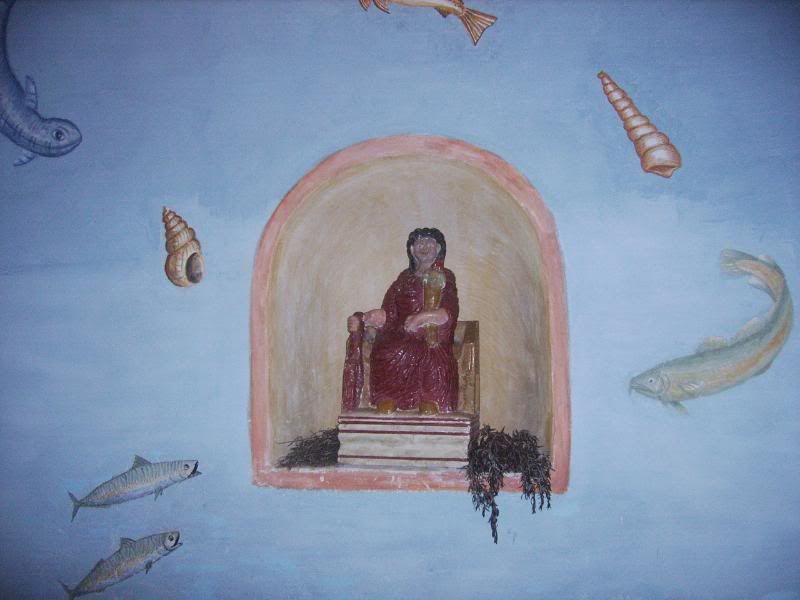
Next, they went into the warm room. The floors were heated from beneath and would get so hot that they had to wear wooden shoes to keep from burning the bottoms of their feet. I don't know what this artwork was supposed to represent, but it was in the warm room, and Bobby and I found it really funny that the water suddenly grew more opaque over the very happy-looking swimmers' genitalia ...
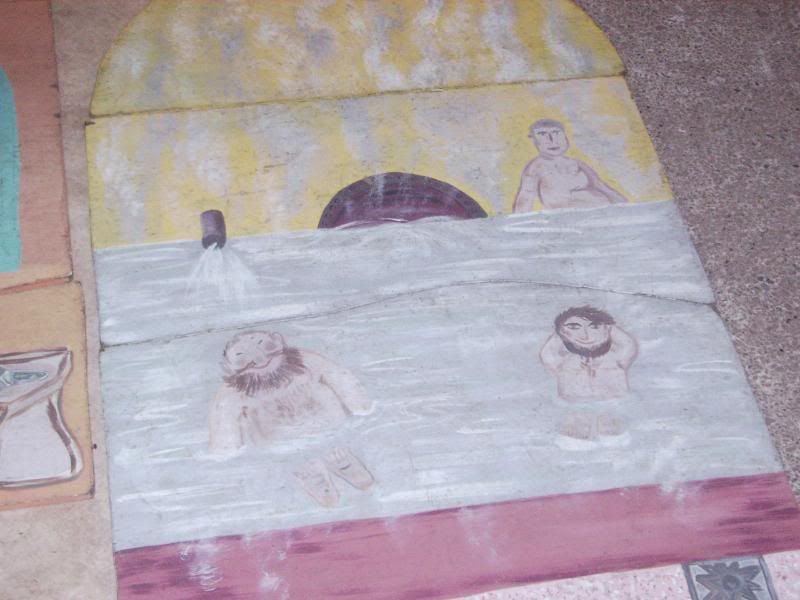
The hot room was next and had a fountain at the one end. The patrons would scrape the sweat and dirt that seeped from their pores (if they had slaves, the slave did it ... ick!). They apparently moved from warm to hot rooms, not spending a lot of time in either, and would end the bathing session in the cold room to close the pores again. Here is the hot room:
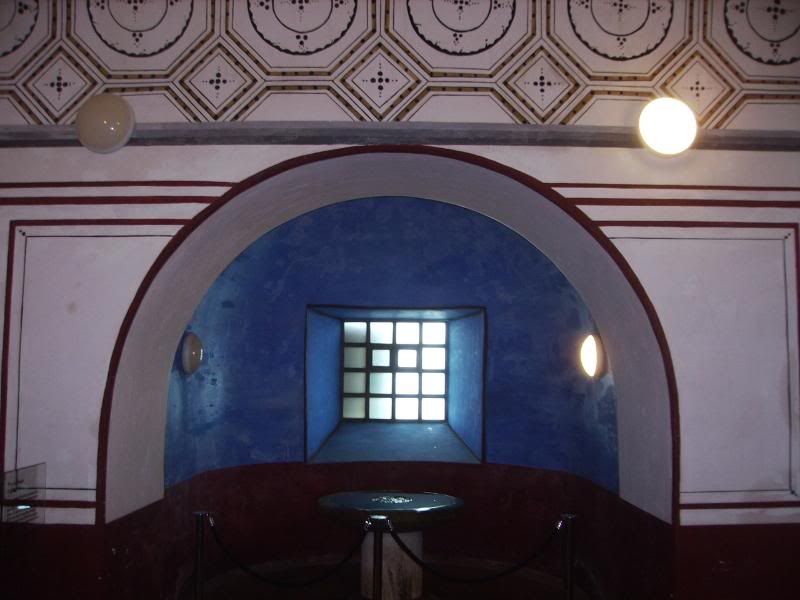
I would be lying if I didn't admit that the toilets were probably the most interesting part of the baths. No, there was no privacy ... and no toilet paper! The trench running in front of the toilets was filled with water, and one used a sponge dipped in it to accomplish what toilet paper does now. What wasn't clear from the guide sheets we were given is whether sponges were reused or shared.
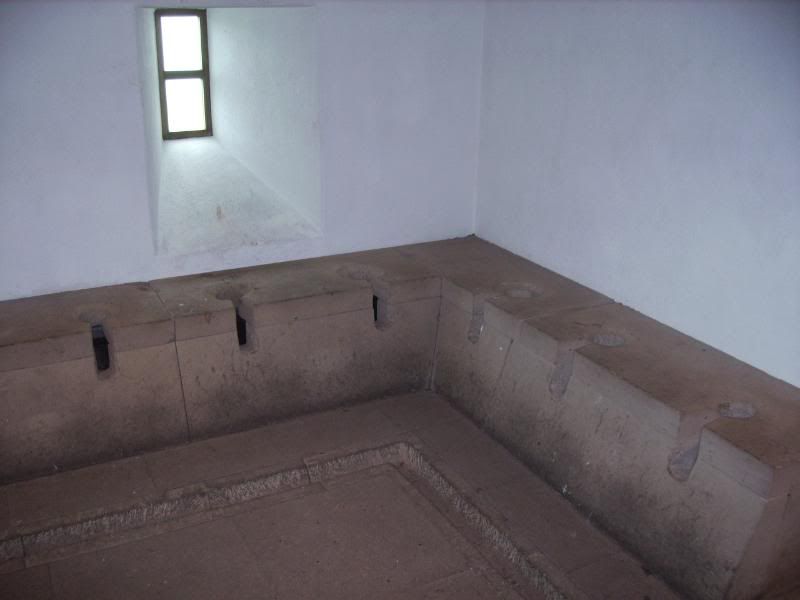
The Roman Gardens
Here is me!
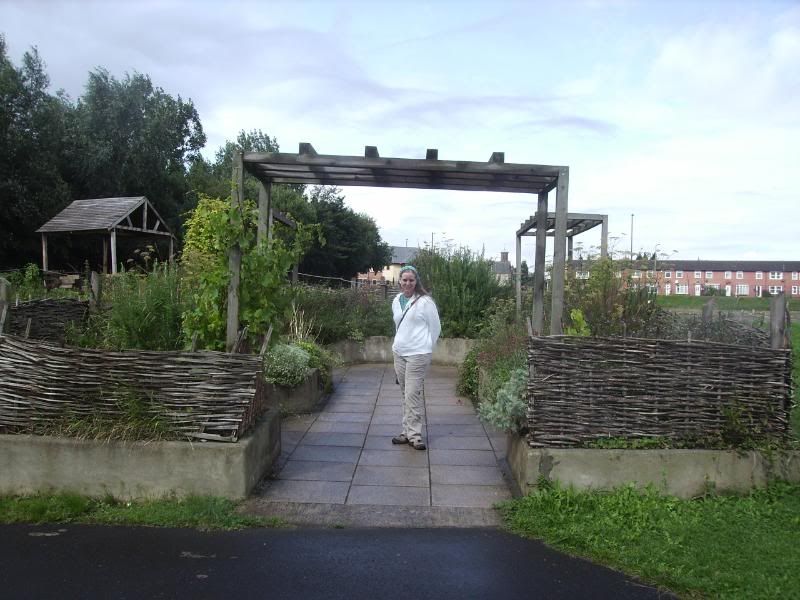

The Ruins
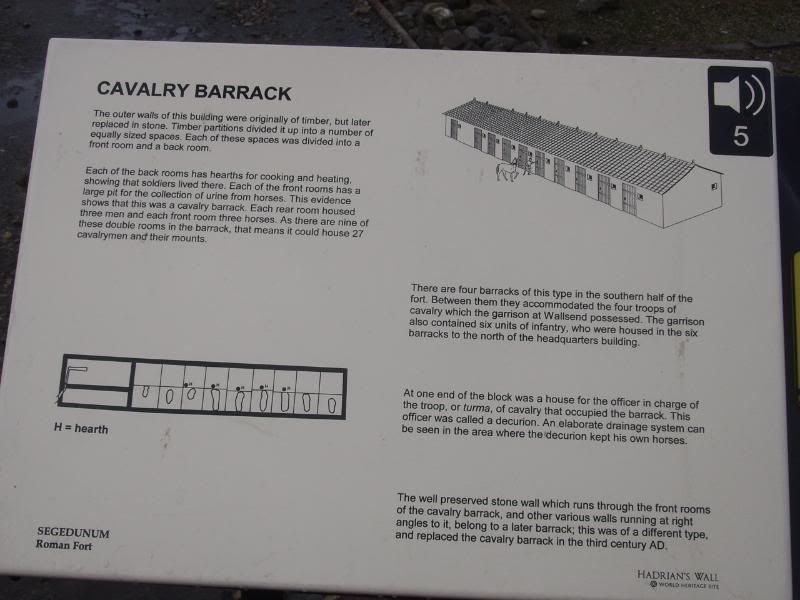
There were three men and three horses in each room of the cavalry barracks. The rooms were quite small (especially compared to the aristocrat's house at the end). The pits in the ground were for collecting the horses' urine.
The stone structures are original. The kerbstones were added where the original foundations no longer remain to show where they likely lay; the golden gravel shows the interiors of the buildings.
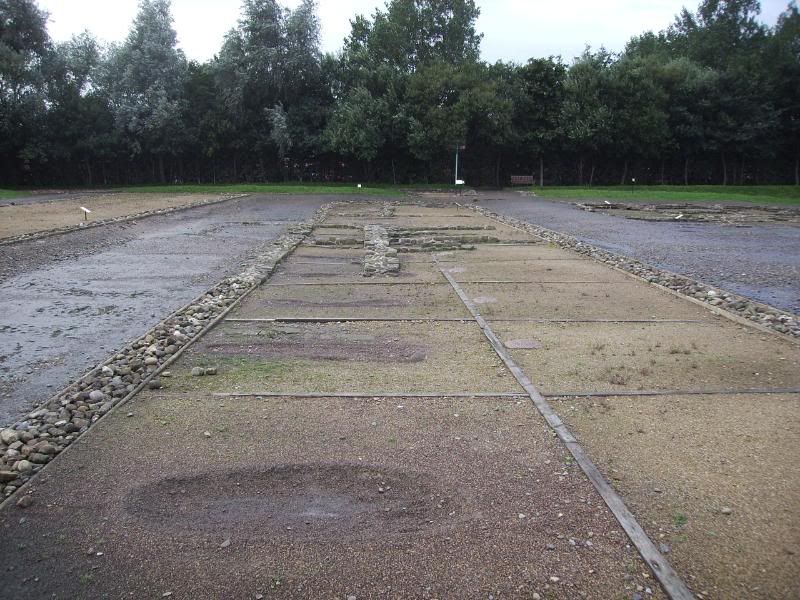
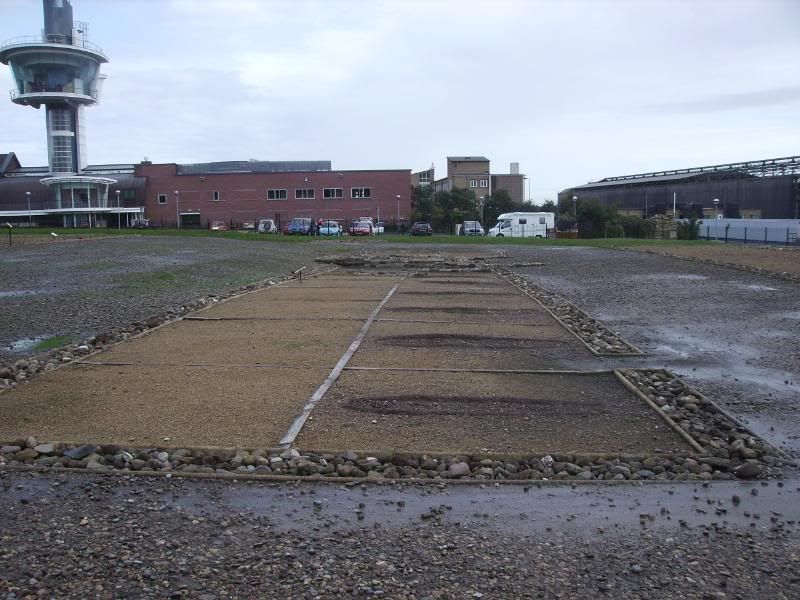
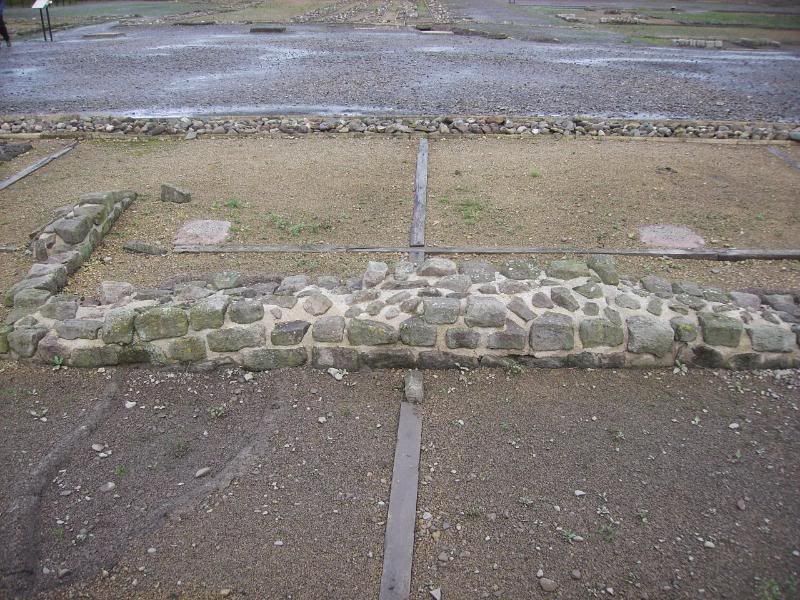
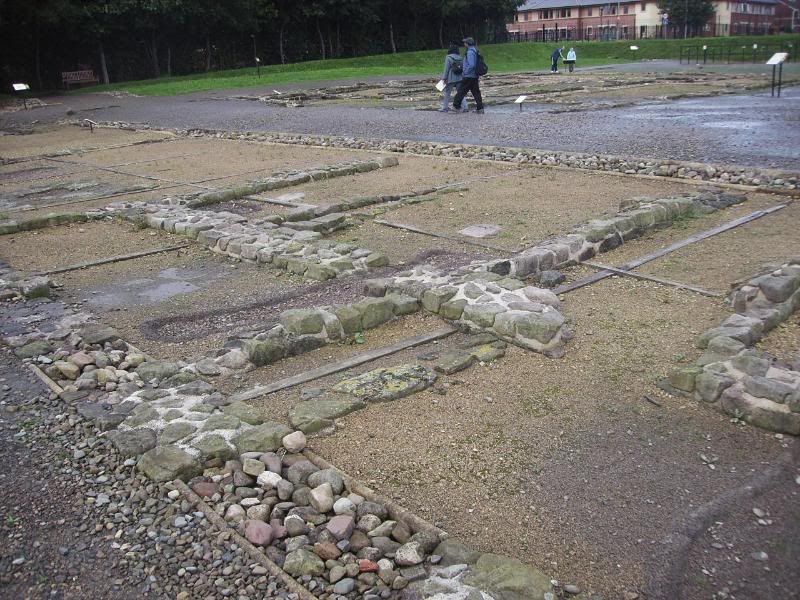
A close-up of a urine pit, luckily urine-free.
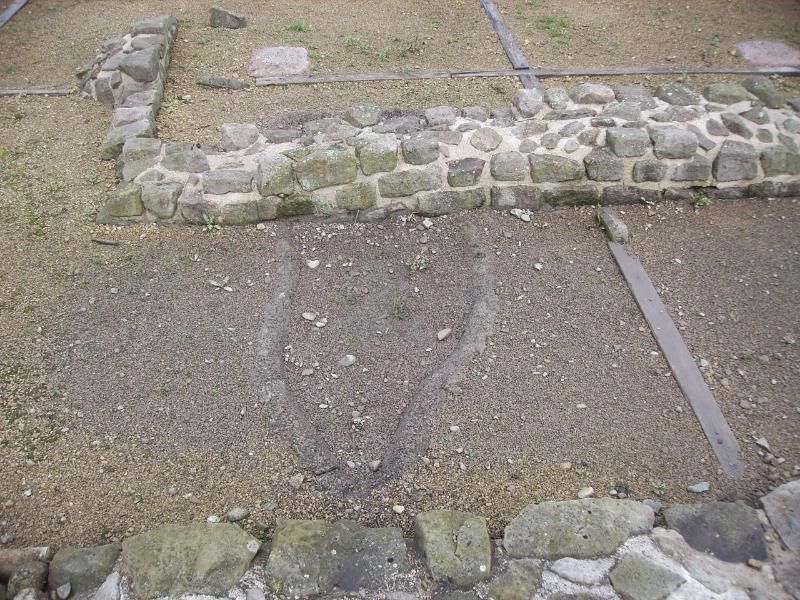
The hospital ...
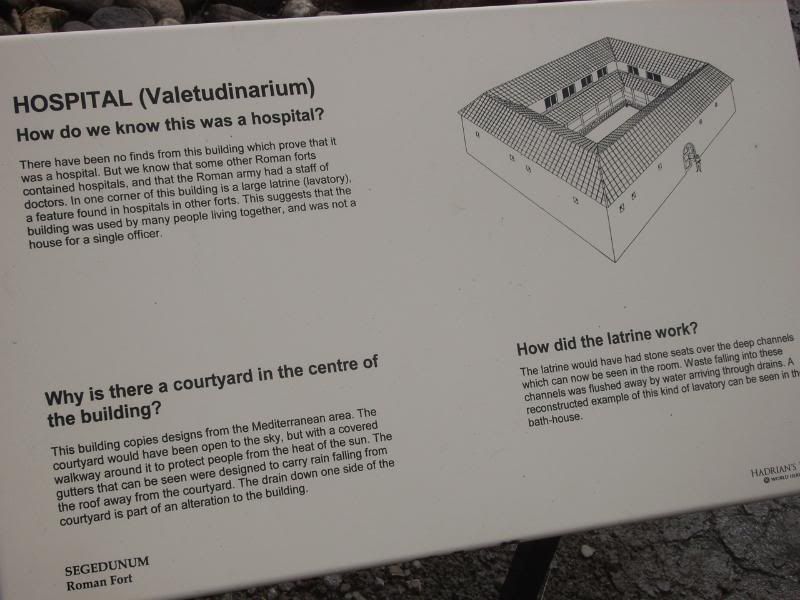

The forehall (descriptive poster and foundation ...)
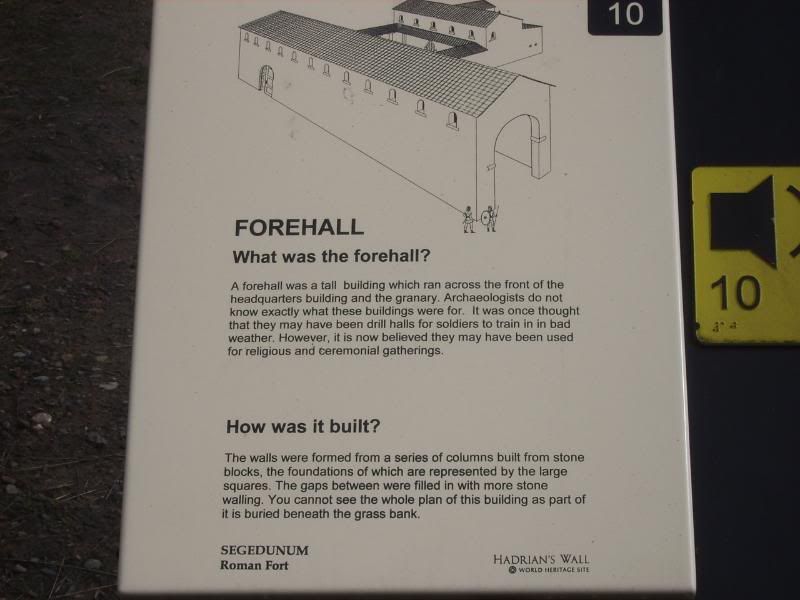

The gate: there were four, one on each side of the complex.
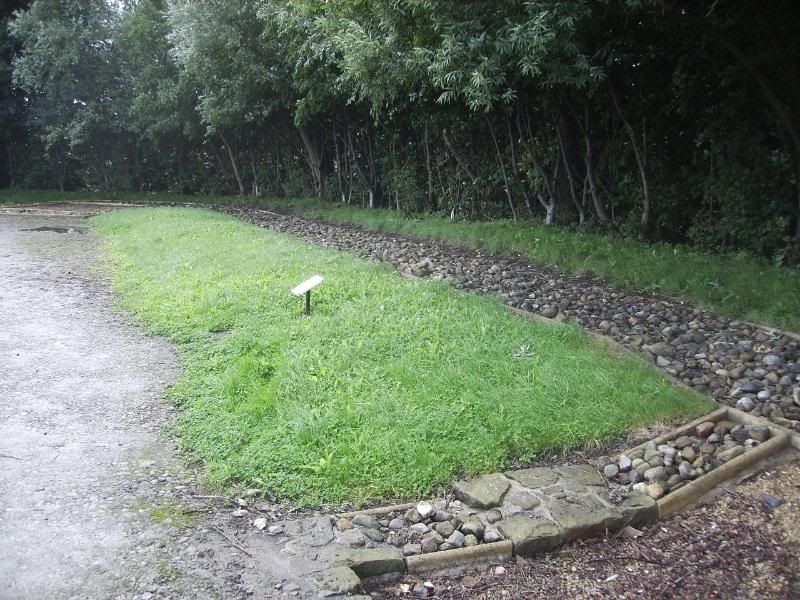
Hadrian's Wall: This must have been an amazing site when it was complete and an amazing feat of construction!
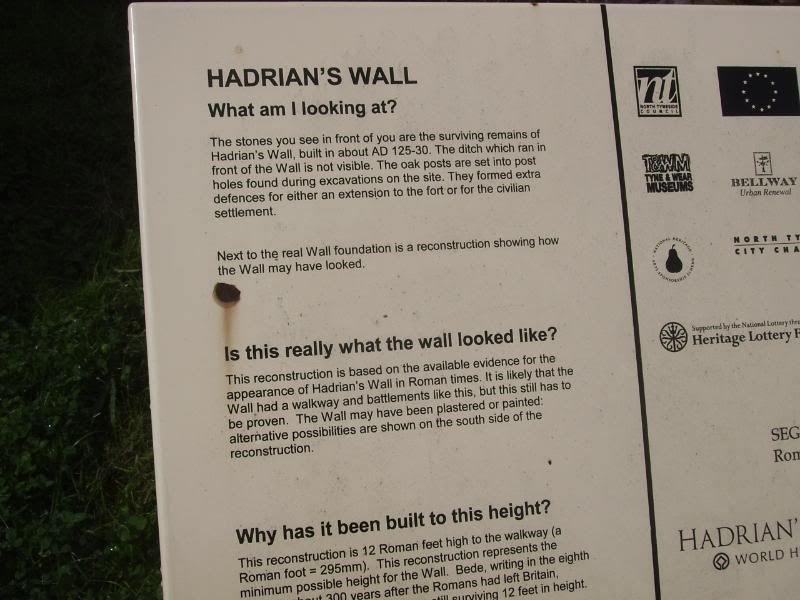

Here is the site's replica:
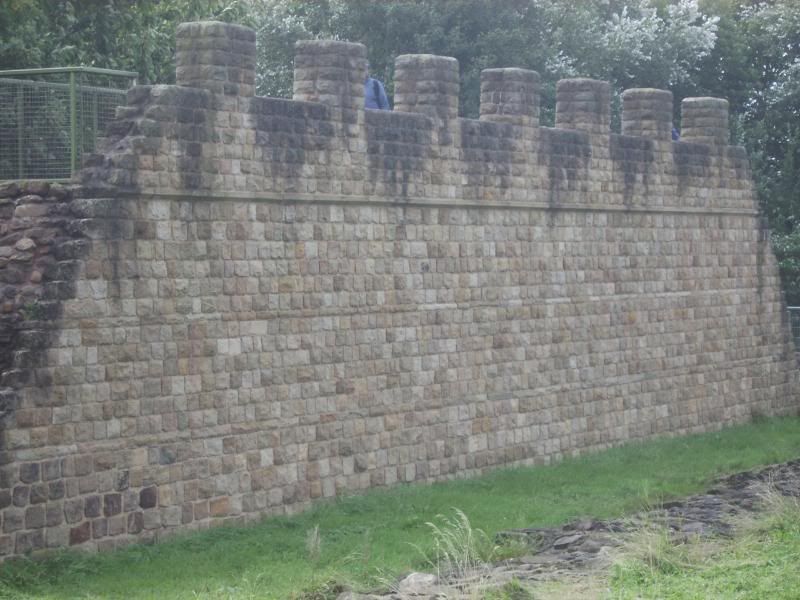
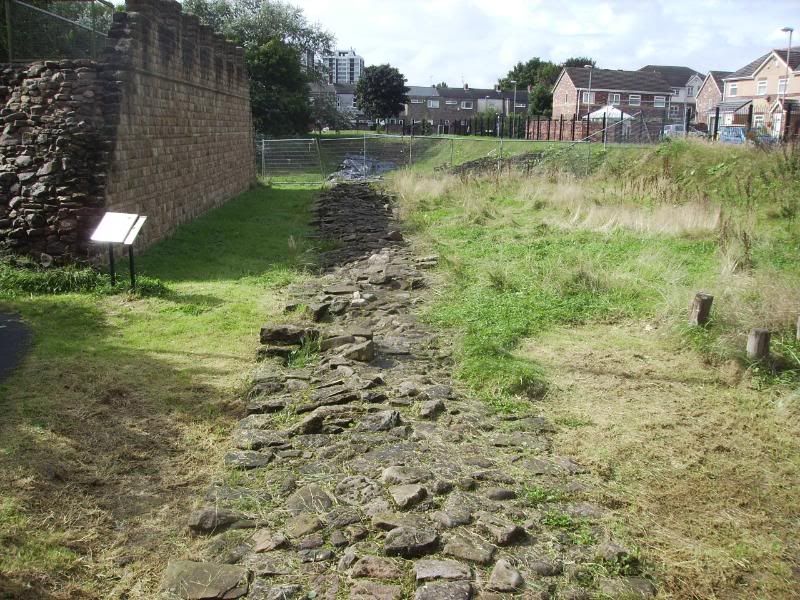
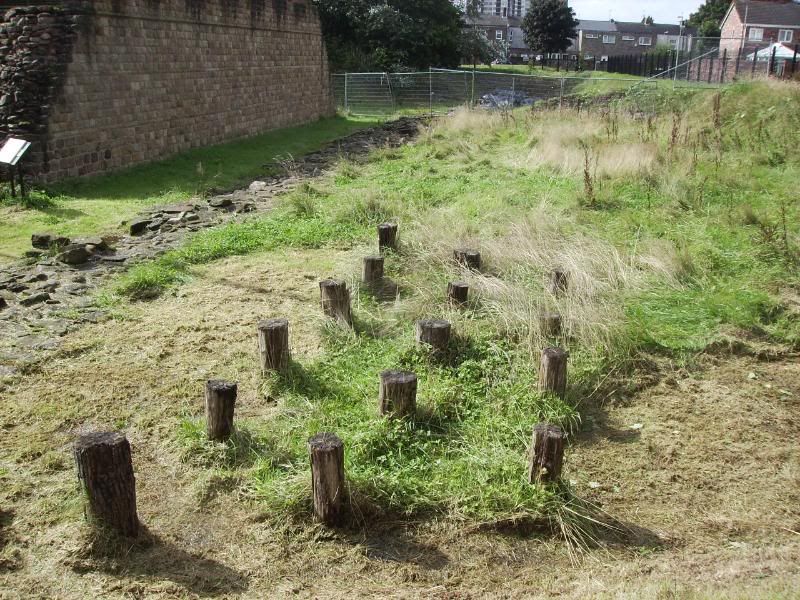
The Praetorium: This was amazing in scope compared to the living quarters of the soldiers. It's bigger than our house!

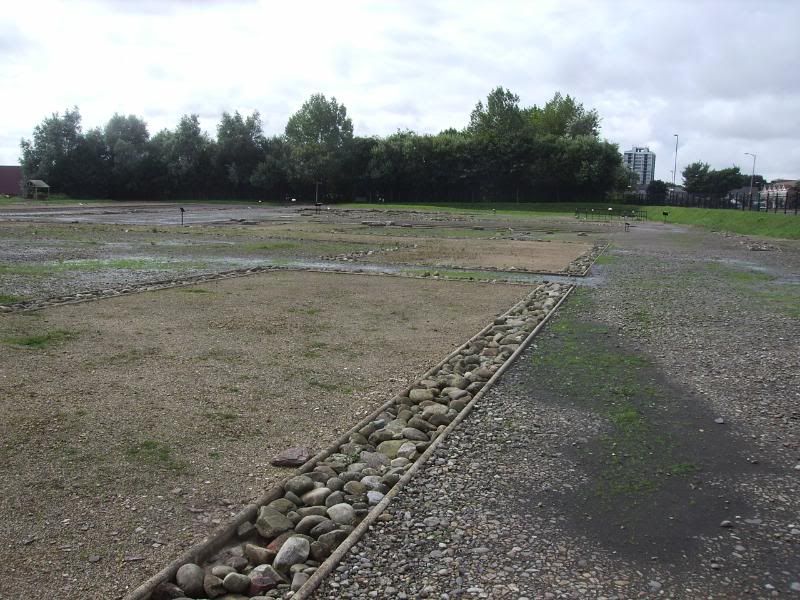

Here is a close-up of one:
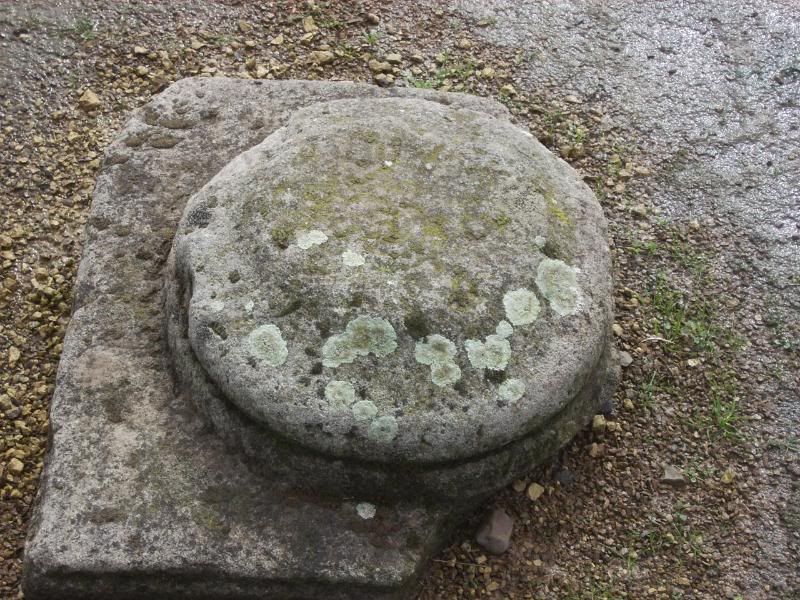
The Principia:
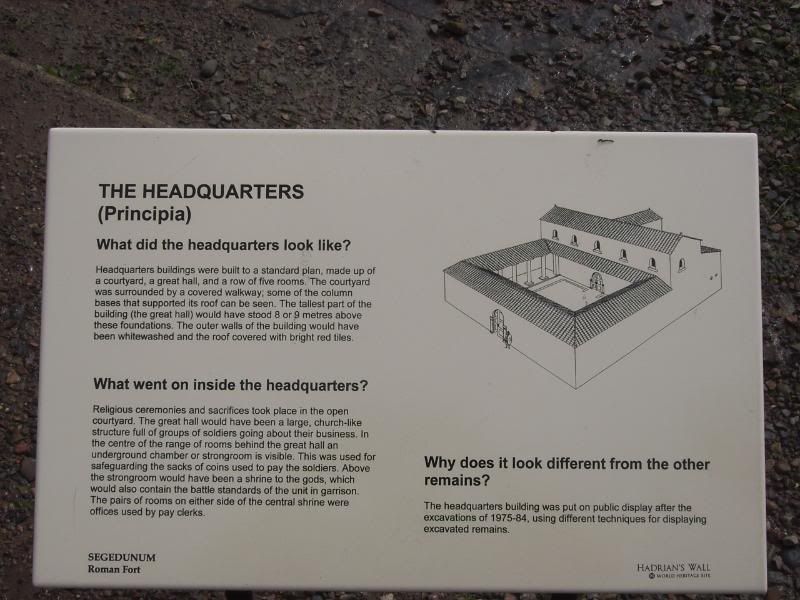
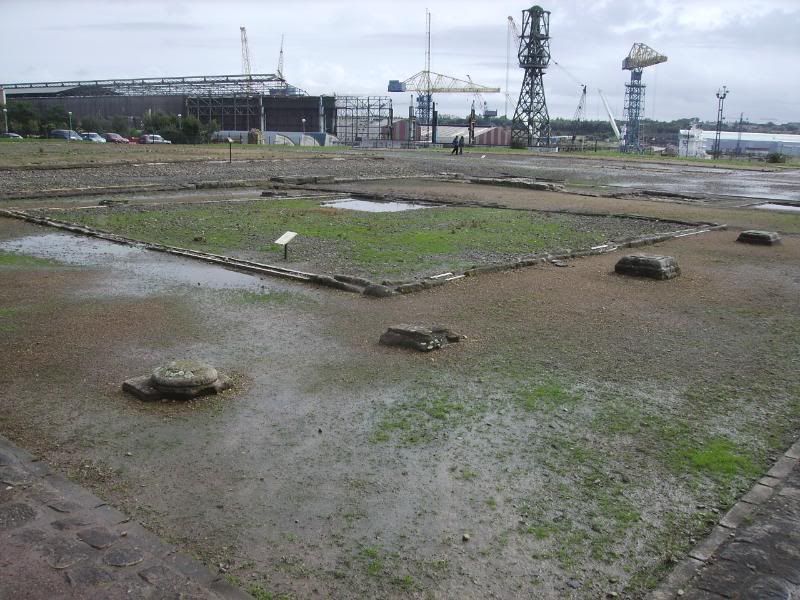
The water tank was an important part of the fort:
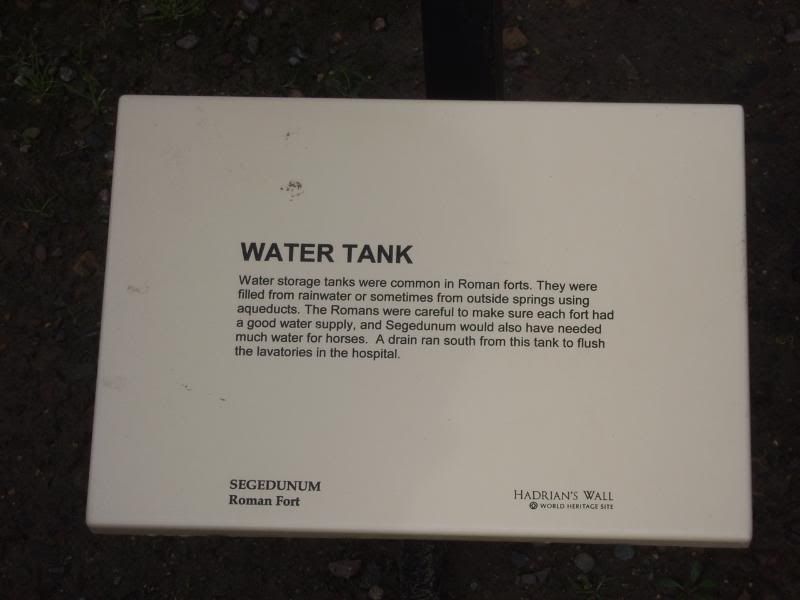
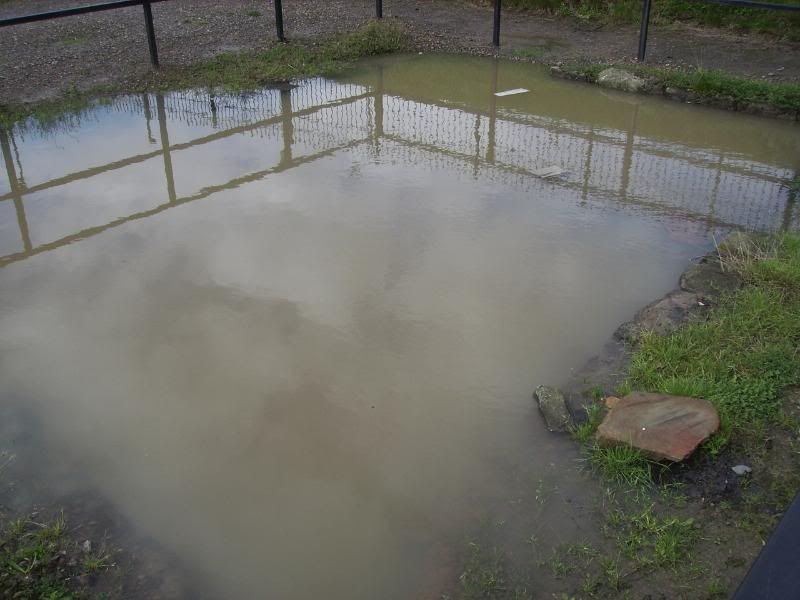
The "B Pit" was not in period for us but was interesting nonetheless:
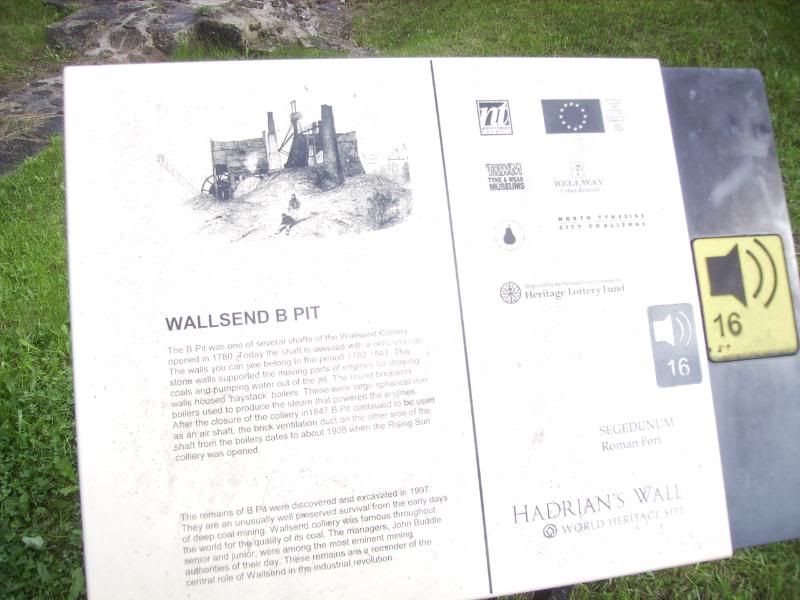

Sundries from within the Museum
These didn't turn out well because the lighting was low and they were glass-encased, meaning we couldn't use the flash. Meh.
A ringmail shirt that was, of course, intensely interesting to Bobby. The remains were found within one of the barracks.
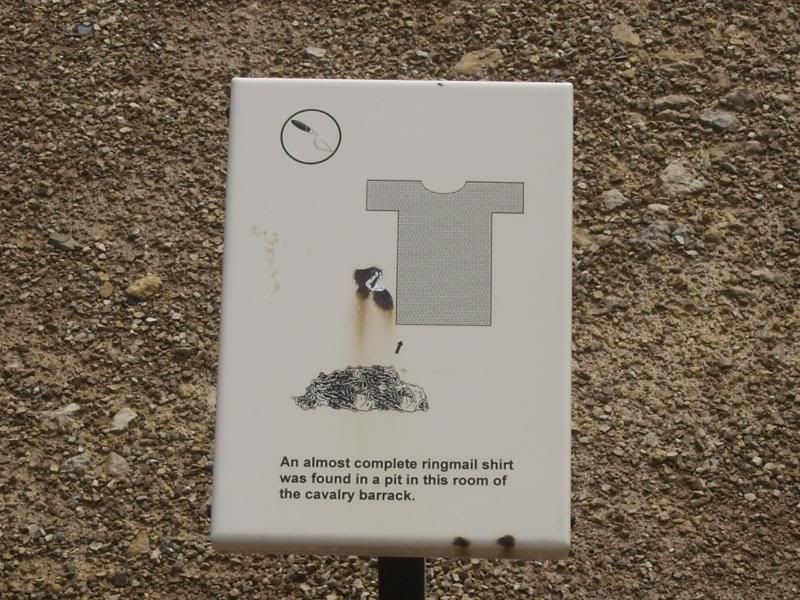
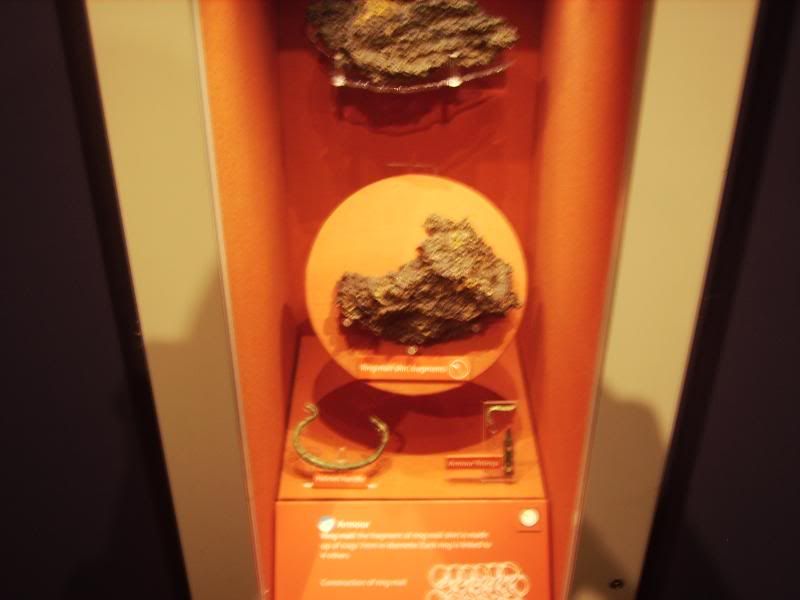
Weapons, real and replica (I don't think I have to explain which is which ;).
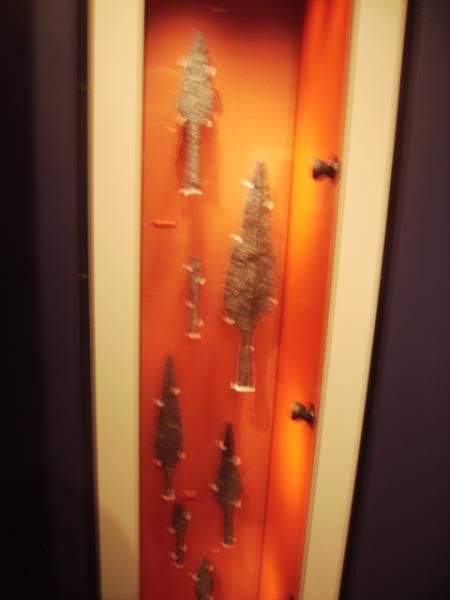
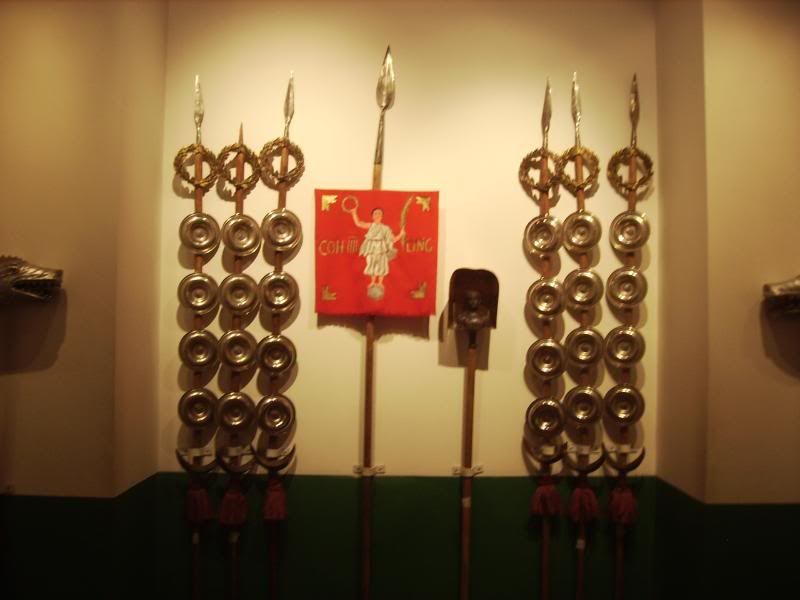
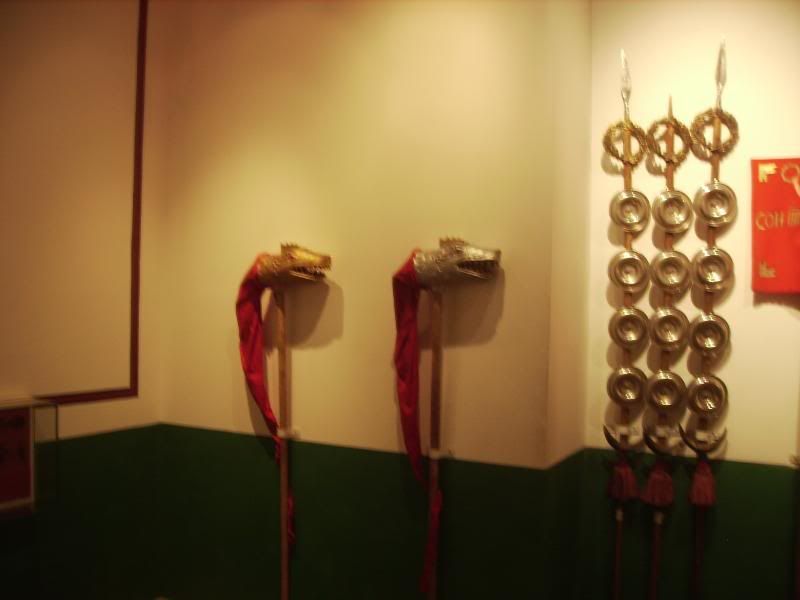
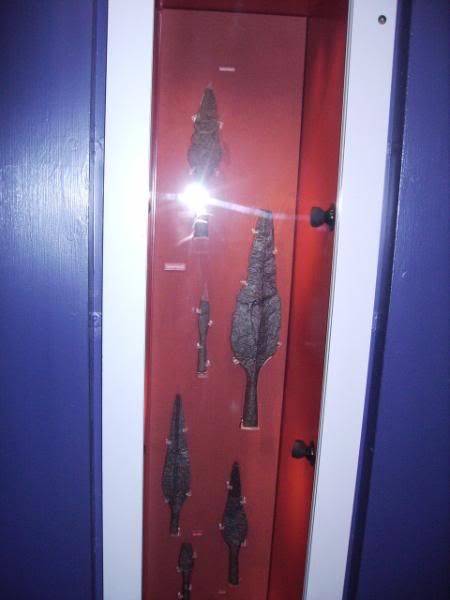
Here was a list of names of Romans known to have worked on Hadrian's Wall. The museum adds to the list as more names become known.
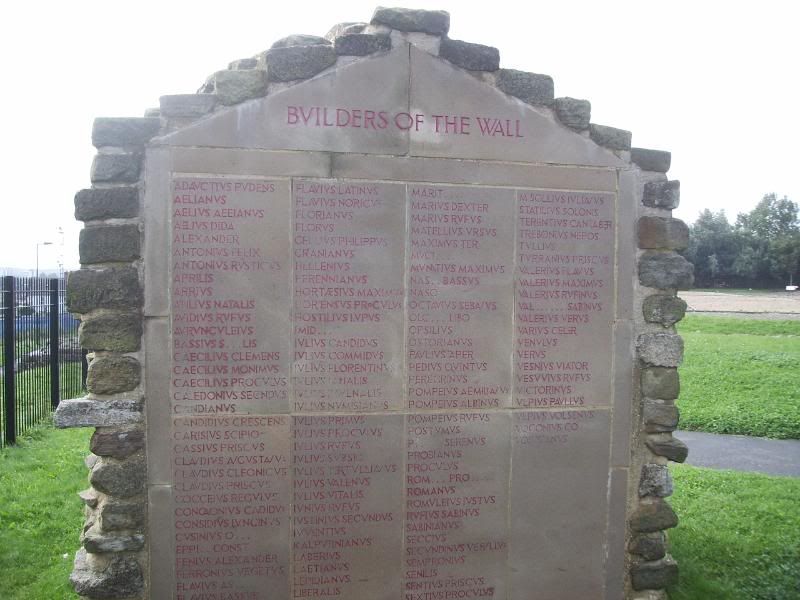
We found a familiar one! Here we thought he was at home, wilding and committing ad hominem attacks against his brother!
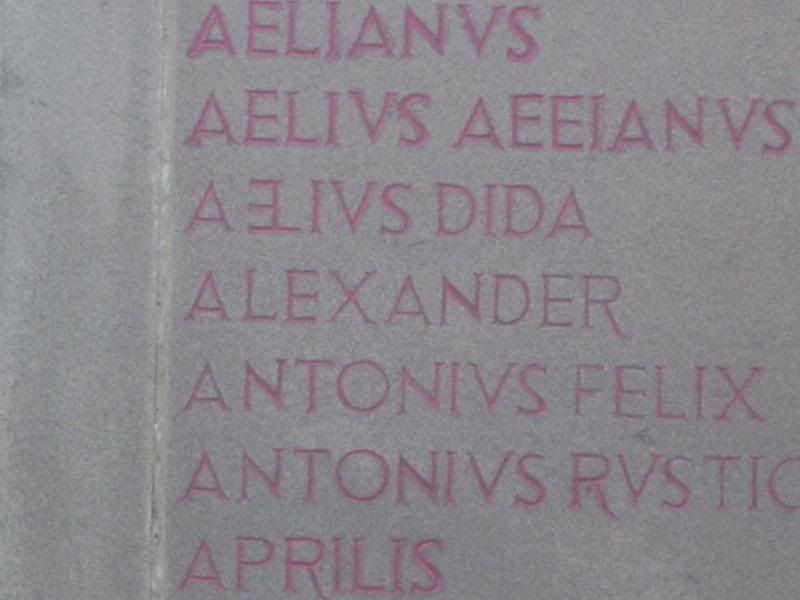
A miniature model of what the fort might have looked like during its existence:
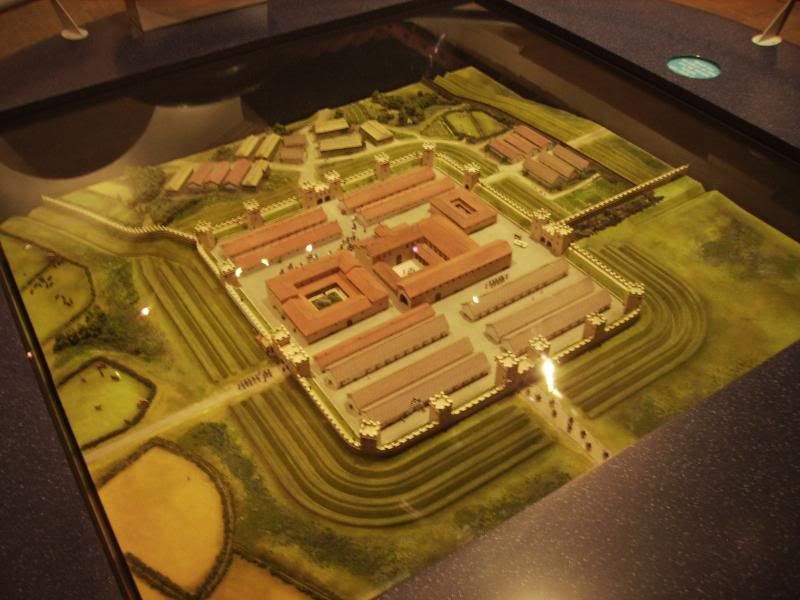
Rather nifty was a sign that was put up by the owner of the land on which Hadrian's Wall lay, asking the townsfolk to aid him in preserving it for generations to come. This was long before historical preservation. It was neat to see such an appreciation then for history when that era often eradicated historical sites. (I found myself getting quite grumpy at 18th and 19th century architects at Raby's Castle today, but that is a story for another post. ;)

Other Sundries
These are other photos Bobby took while out walking yesterday morning.
The Tynemouth seaside, taken when we walked to the castle and found that it was closed again.
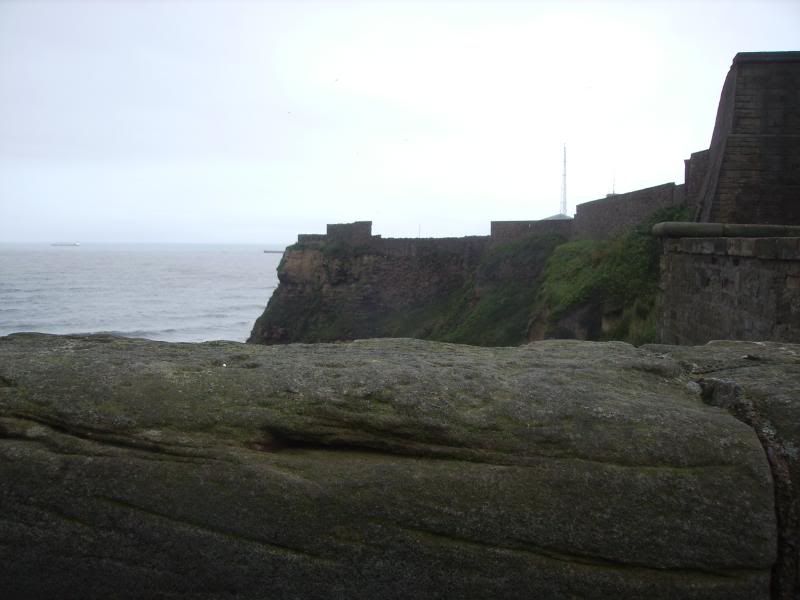

The church in Tynemouth (now a collection of shops called Green Ginger); I'm not sure of the age. Bobby and I have to research this along with the age of the Cullercoats cathedral that we saw on our walk today (up in the next post, whenever that may be. ;)
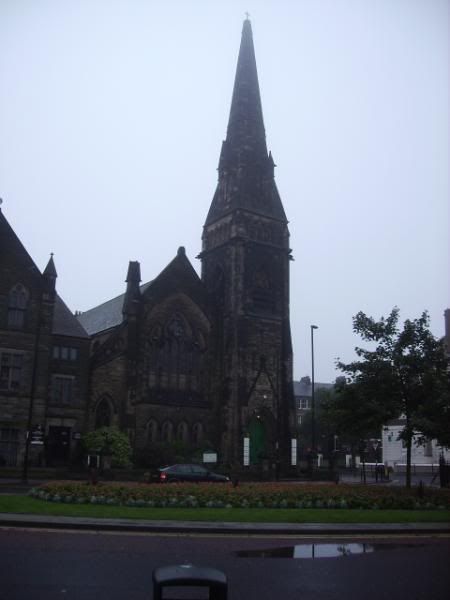
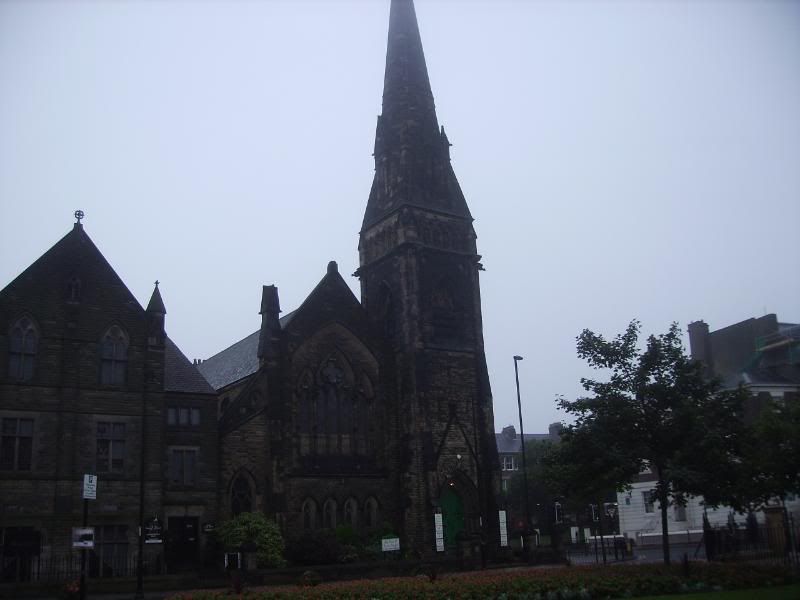
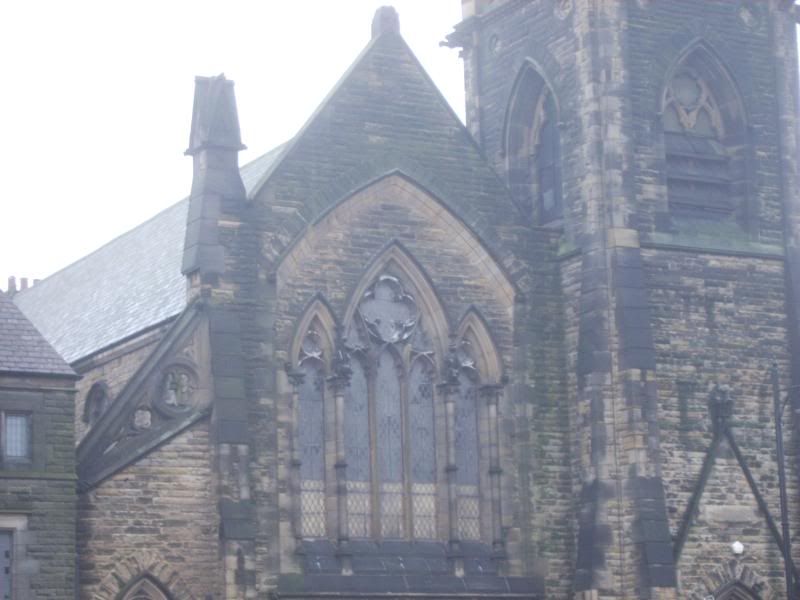
And ... a red English phone booth. According to my sister, there is a move to get rid of these entirely, which made me need a photo of the one in Tynemouth, lest it not be there any longer when we return! Bobby took this for me.

Bobby and I were left with a few hours to spend, so we decided to head to one of the next towns over to Wallsend to see Segedunum, an excavated Roman fort built at the east-most end of Hadrian's Wall. Hadrian's Wall extends across the north of England and was built by the Emperor Hadrian to protect the Romans from the "Barbarians" to the north. Besides the excavated fort, there is a museum on site and a reconstructed Roman bath.
Bobby and I wandered around the museum first because the baths were only opened every hour on the hour. When the hour came around, we headed over to the baths, which were a mirror reconstruction of a bath found nearby. Next, we headed out to the garden, then wandered around the ruins. Many of the original stones remained, and it was amazing to stand on structures that were almost two thousand years old.
That afternoon, we went over Kirsty's parents' house for Sunday roast lunch, a tradition we don't have in the United States: The closest comparison I can draw is that it is a Thanksgiving feast every week, with a meat course, multiple vegetables, and potatoes. It was excellent. It was a tradition I could gladly adopt! It has also been wonderful to meet my "UK family" at long last; they are wonderful people, and we've gotten on great with them.
That evening we spent at home and ordered pizza and Chinese take-away for a late-night supper.
Yes, there are pictures ...
Here is the museum with the ruins in the foreground:

The Baths
Here is Bobby in front of the baths ...

The first room is the changing room, where the patrons used to sit and talk and play board games while waiting to enter the baths. The sessions were men-only and women-only, so nothing too exciting!


The cold room was where the patrons washed off the dirt before moving into the warm and hot rooms. The frescos were done in the style of some that they had been found. The water tank is beyond the glass ...



A replica of a statue of Fortuna that sat in the room ...

Next, they went into the warm room. The floors were heated from beneath and would get so hot that they had to wear wooden shoes to keep from burning the bottoms of their feet. I don't know what this artwork was supposed to represent, but it was in the warm room, and Bobby and I found it really funny that the water suddenly grew more opaque over the very happy-looking swimmers' genitalia ...

The hot room was next and had a fountain at the one end. The patrons would scrape the sweat and dirt that seeped from their pores (if they had slaves, the slave did it ... ick!). They apparently moved from warm to hot rooms, not spending a lot of time in either, and would end the bathing session in the cold room to close the pores again. Here is the hot room:

I would be lying if I didn't admit that the toilets were probably the most interesting part of the baths. No, there was no privacy ... and no toilet paper! The trench running in front of the toilets was filled with water, and one used a sponge dipped in it to accomplish what toilet paper does now. What wasn't clear from the guide sheets we were given is whether sponges were reused or shared.

The Roman Gardens
Here is me!


The Ruins

There were three men and three horses in each room of the cavalry barracks. The rooms were quite small (especially compared to the aristocrat's house at the end). The pits in the ground were for collecting the horses' urine.
The stone structures are original. The kerbstones were added where the original foundations no longer remain to show where they likely lay; the golden gravel shows the interiors of the buildings.




A close-up of a urine pit, luckily urine-free.

The hospital ...


The forehall (descriptive poster and foundation ...)


The gate: there were four, one on each side of the complex.

Hadrian's Wall: This must have been an amazing site when it was complete and an amazing feat of construction!


Here is the site's replica:



The Praetorium: This was amazing in scope compared to the living quarters of the soldiers. It's bigger than our house!



Here is a close-up of one:

The Principia:


The water tank was an important part of the fort:


The "B Pit" was not in period for us but was interesting nonetheless:


Sundries from within the Museum
These didn't turn out well because the lighting was low and they were glass-encased, meaning we couldn't use the flash. Meh.
A ringmail shirt that was, of course, intensely interesting to Bobby. The remains were found within one of the barracks.


Weapons, real and replica (I don't think I have to explain which is which ;).




Here was a list of names of Romans known to have worked on Hadrian's Wall. The museum adds to the list as more names become known.

We found a familiar one! Here we thought he was at home, wilding and committing ad hominem attacks against his brother!

A miniature model of what the fort might have looked like during its existence:

Rather nifty was a sign that was put up by the owner of the land on which Hadrian's Wall lay, asking the townsfolk to aid him in preserving it for generations to come. This was long before historical preservation. It was neat to see such an appreciation then for history when that era often eradicated historical sites. (I found myself getting quite grumpy at 18th and 19th century architects at Raby's Castle today, but that is a story for another post. ;)

Other Sundries
These are other photos Bobby took while out walking yesterday morning.
The Tynemouth seaside, taken when we walked to the castle and found that it was closed again.


The church in Tynemouth (now a collection of shops called Green Ginger); I'm not sure of the age. Bobby and I have to research this along with the age of the Cullercoats cathedral that we saw on our walk today (up in the next post, whenever that may be. ;)



And ... a red English phone booth. According to my sister, there is a move to get rid of these entirely, which made me need a photo of the one in Tynemouth, lest it not be there any longer when we return! Bobby took this for me.
